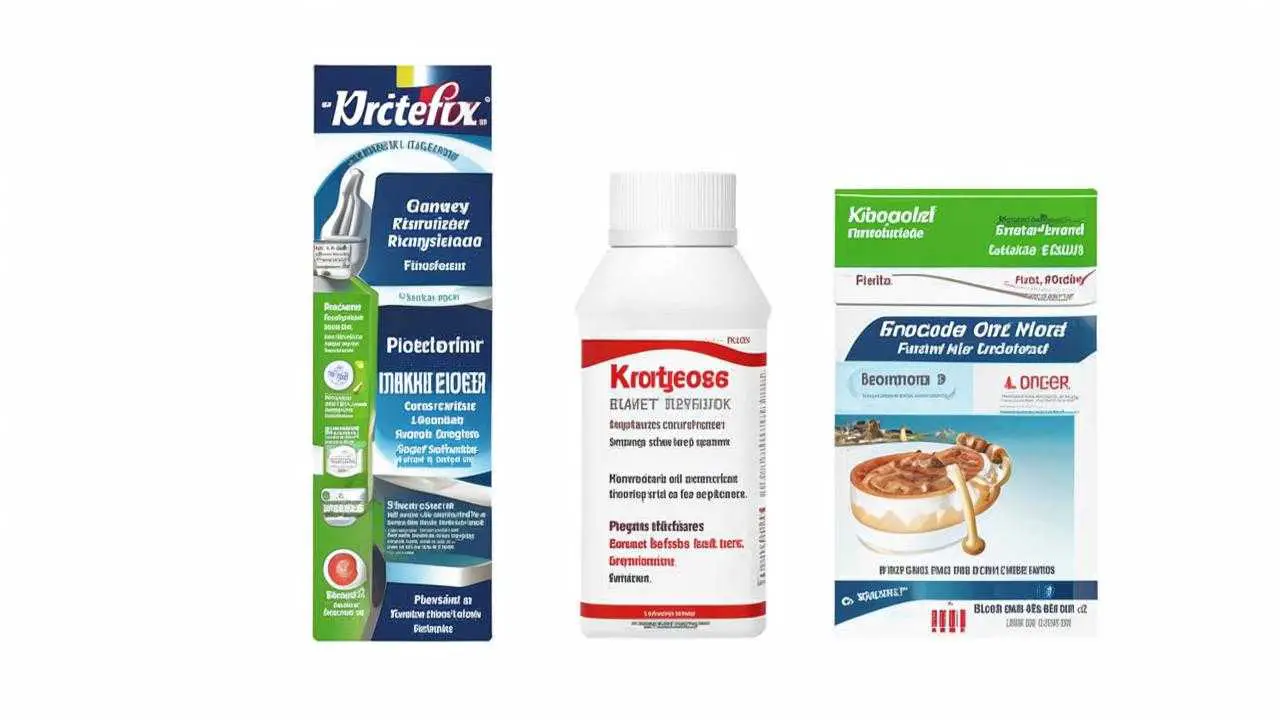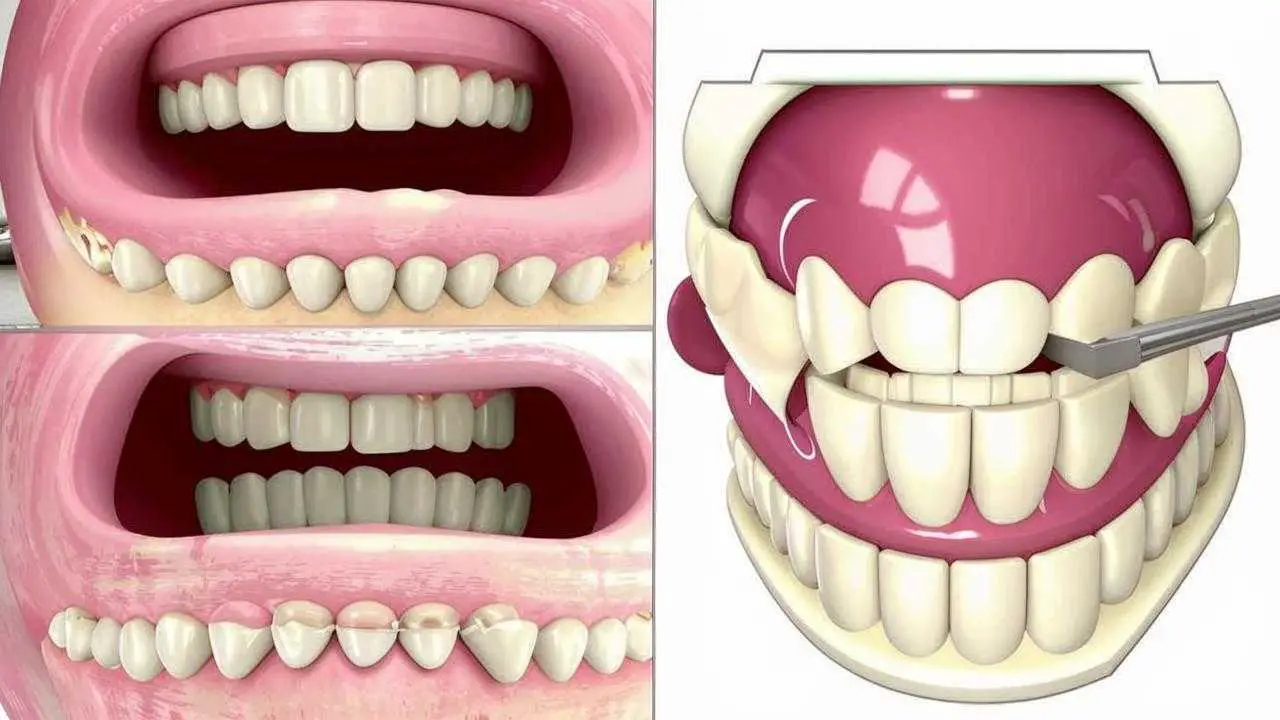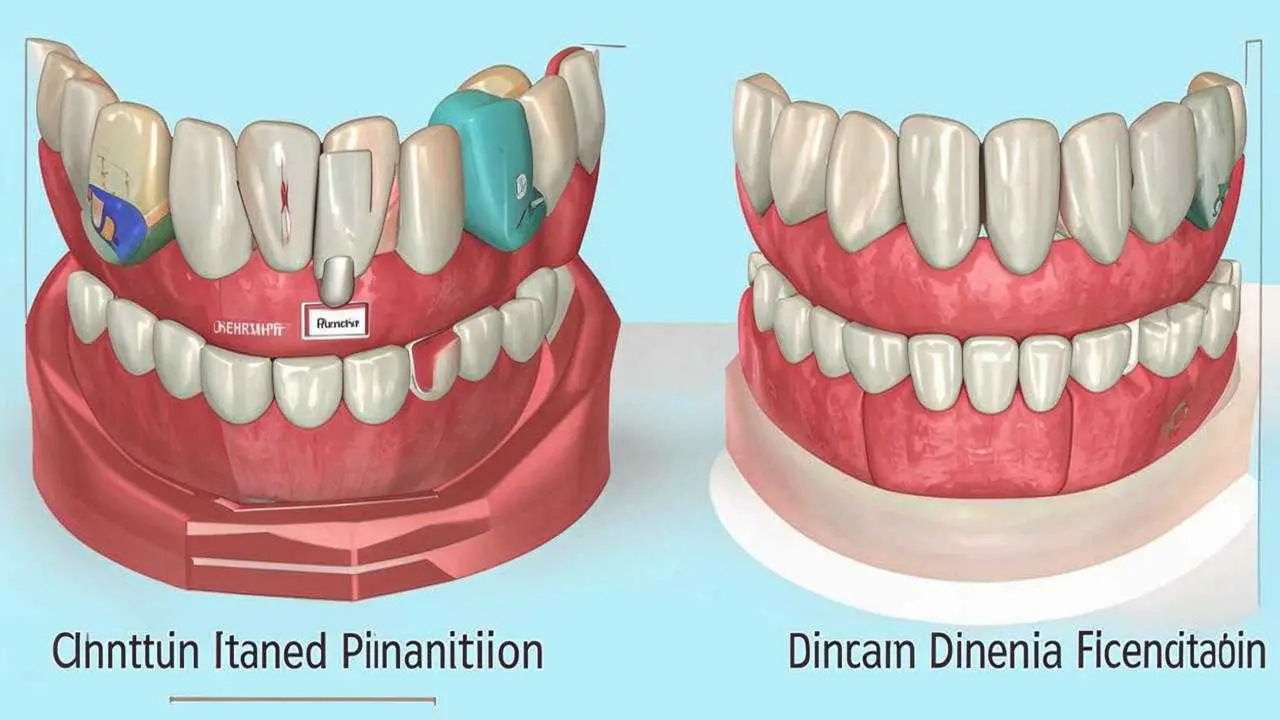October 21, 2021 Reading time ~ 7 min Number of reads: 44455
Dentures restore the dentition and its function when several or all teeth are lost. Getting back the ability to chew, smile and speak normally without fear makes a difference in patients’ lives. However, the success of prosthetics depends largely on how dentures are attached and how strong that attachment is.
Each type of prosthetic restoration has its own method of anchorage, or even several.
The prosthodontist’s job is to provide not only fixation of the dentures (keeping it in the mouth at rest), but also stabilization (holding it in place while the jaws are working).
Methods of denture retention in the complete absence of teeth
The retention of the removable denture plate in the mouth at rest is due to a combination of several factors:
- Adhesion (sticking, adhesion). In the presence of a moist layer, 2 touching objects adhere to each other. Moisture is provided by saliva. Its viscosity reduces or increases adhesion. However, this force alone is not enough to hold the structure together.
- Anatomical retention. Protruding parts of the oral organs limit the movement of the restoration. If there is a large amount of bone loss, retention is significantly reduced.
- Valve retention. When placed, the denture slightly pushes through the mucosa, forcing air out from underneath the base. The mucosa regains its shape and prevents the air from returning. A vacuum is created. Because of the difference in pressure, the restoration is sucked in.
This is the main way in which upper dentures are held in place. The lower constructions are more difficult. To fix them, it is often necessary to resort to additional means.
Means that increase the strength of fixation
The fitting and habituation of removable dentures is easier with artificial adhesives. The use of adhesive agents increases the stability of the denture and prevents inflammation of the denture bed. Studies confirm that the use of adhesives reduces the period of adjustment to the artificial jaw from 15-30 to 5-8 days. [1].
To enhance the fixation and stabilization of the denture is used:
- Adhesive powder. The powder is applied to the wet surface, the denture is inserted into the mouth and the teeth are pressed firmly together for a few seconds. For better retention of the removable denture, it is recommended that you refrain from eating immediately after inserting the restoration. The powdered restoration can be worn for up to 12 hours.
- Creams and gels. The principle of action is the same, just the cream has a denser structure. The adhesive substance is applied to the inner surface of the prosthesis. In the mouth, under the influence of saliva, the cream (gel) expands, forming a seal between the mucosa and the surface of the restoration. Adhesives are effective for 12 to 24 hours.
- Spacers. Spacers, like other adhesives, allow you to wear dentures without fear of dislodging them while eating or coughing. Before use, the spacers are held in warm water for 5 seconds. They are then placed on the base and the structure is inserted into the oral cavity.
- Films. The principle of action is the same as that of the pads. The film is adjusted to the base of the denture, incisions are made for a better fit, it is placed on the base and the denture is placed in the mouth. The period of validity is up to 10 hours, after which the film must be changed and the restoration put on again.
Fixation methods for partial dentures
Partial dentures are secured by the same factors as full dentures: adhesion, anatomical retention and valve effect. However, partial dentures have additional mechanisms that help to secure the dentures. This makes the structures more stable, increasing their stability.
Thus, when installing removable dentures of the bra type are used:
- Clammers. There are several types of clumpers, but they have one common action – to fix the restoration on the supporting teeth and redistribute the pressure on them. Partial plate restorations are also attached with clasps.
- Attachments. These are small clasps that connect in a matrix and patrix-like fashion. Attachments can be intra-dental (a more complicated type) or extra-dental. Dentures are placed on movable and fixed attachments. Locked retainers are more aesthetically pleasing than clamshell retainers, but they require grinding of the supporting teeth.
- Telescopic retention system. Telescopic fixation of dentures is a relatively recent method, but it has already proven itself. Its essence is that the inner crown is put on the supporting tooth, and the outer crown, which is connected to the bracket, is fixed on top. This is the most aesthetic and stable type of fixation.
- Bar fixation. The bar that splints the teeth in the mouth acts as the patrix, and the matrix is the corresponding recess on the inside of the denture. The presence of the bar increases the stability of the remaining teeth and strengthens the retention. Beams serve well and last a long time.
- Magnetic fixation system. The method is based on the property of poles with opposite charges to attract, and with the same charge to repel. Magnets are installed in the base of the prosthesis and in special implants. Or in the denture of the opposite jaw. The method has not found widespread use because the attraction is weakened by lateral movements.
Fixation of provisionally removable dentures
Conditionally removable are constructions that can be removed, but this requires certain manipulations. It is better to have this procedure performed by a dentist.
Dentures of this type are attached to implants. There are 2 methods of attachment: button and bar.
The bar method is the same as in braces. The bar acts as a patrix and is attached to the implants. The matrix is located in the body of the prosthesis. Due to the bar, the masticatory load is distributed evenly.
The button method also uses a male and a female matrix, but there is no bar. The abutment (transitional element) fulfills the role of the male.
Attachment of fixed dentures
Dentures that cannot be removed without damaging them are called fixed dentures.
These include:
- Crowns. They help to save severely destroyed teeth, restore gaps in the tooth row.
- Bridges. They are designed to restore the function of a lost tooth. Unfortunately, apart from grinding teeth for crowns, bridges have one more disadvantage. Bone tissue in such prosthetics continues to decrease, bringing functional and aesthetic changes.
- Dentures on implants (with screw fixation of the prosthesis, it can be removed in the dentist’s office). The implant completely takes over the function of the tooth. Stops bone loss, takes chewing load.
- Microprostheses (veneers). Belong to aesthetic dentistry, their main purpose is to restore the smile
With the exception of implantation, the prosthetic tooth is placed on the prepared unit in these methods. For veneers, the degree of preparation is small, only the top layer of enamel is removed.
For crowns, the more the tooth is ground down, the thicker the crown. The thickest crowns are made of metal-ceramic. Modern ceramic compositions make crowns that are strong, light and thin. The thinnest products are made of zirconium dioxide. It is very hard and can withstand loads with minimal thickness.
If the crown part of the tooth is severely destroyed, it is necessary to fix dentures on a post or stump inlay. This is a rod made of a strong material, fiberglass or metal, which is inserted into the tooth canal. It serves as a support for the restoration.
How prosthetic teeth are placed on implants
There are several ways:
- for single defects, a prosthetic tooth inthe form of a crown is placed on the implant;
- in the case of several teeth defects, a bridge can be placed on the implant;
- in the case of a complete absence of teeth, the entire jaw is prosthetically replaced.
The number of implants in the last method depends on the protocol. It can be 4 or 6 implants, and when using the Resmile method, the number of implants is determined by the doctor based on the specific clinical case and combines different types of posts for the best result.
Fixing dentures to implants can be done in two ways:
- On cement. Modern dental cements securely fix restorations and last for a long time.
- On screws. This is a more complex type of fixation, requires great skill from the doctor. The main advantage of installing dentures on screws, is the ability to remove the structure without damage, carry out the necessary manipulations, and then put back.
On how firmly fixed the denture, depends on the time of habituation and ease of use. The method of fixation is selected by the prosthodontist, based on his experience and taking into account the specific problems of the patient.
Sources:
[1] Mirsaev T.D. ” Means that improve the adhesion of removable dental prosthesis constructions” Publishing House “Tirazh” 2019





